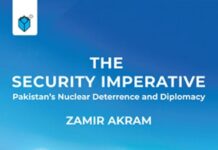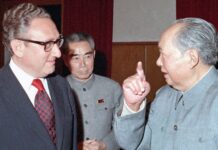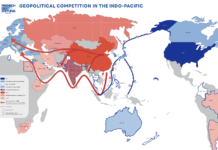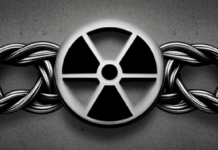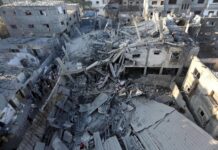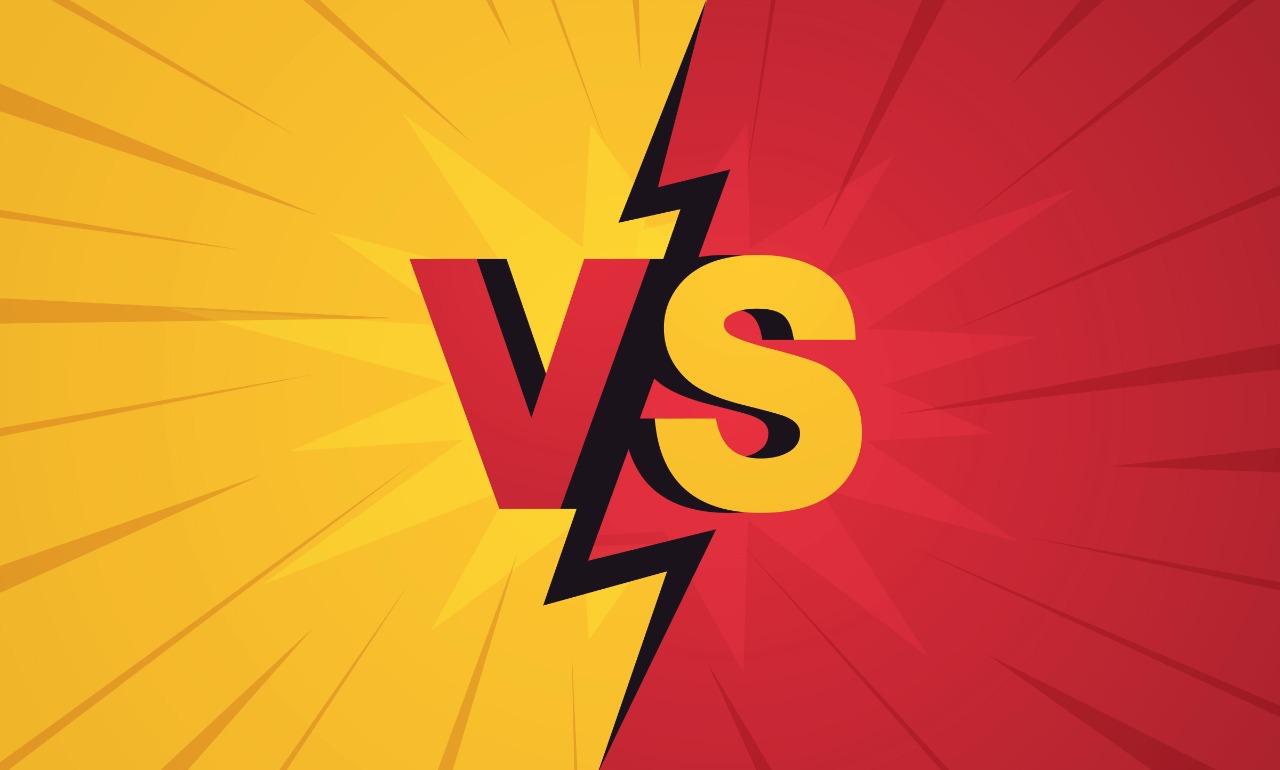Rizwan Zeb
In Akira Kurosawa’s classic Rashomon, different characters narrate their perspective of the story. Vantage Point treats the plot and its execution in a similar way. The story of the film is presented through the perspectives of different characters and just like the classical Indian fable, the blind men and the elephant, a complete picture emerges only after piecing all the perspectives and views together. By doing this, one gets a whole picture of the story or at least idea about the position of the parties involved. Can we use this to learn something about inter and intra-state conflicts?
Take for instance the single shot that shook the world fired by Garvrilo Princip that killed Hapsburg Archduke Franz Ferdinand and his wife in Sarajevo that resulted in the First World War. Who were Franz Ferdinand and Garvrilo Princip? Why Princip shot the Archduke? Why it mattered? And why it is important to find answers to these questions? How this knowledge can help us understand what exactly happened? What lessons and implications can be drawn from this that can help us in understanding conflicts? If at all?
Franz Ferdinand Carl Ludwig Joseph Maria (1963-1914), Archduke of Austria Este, Royal Prince Hungary and Bohemia and heir of the Austro-Hungarian throne accompanied by his wife Duchess Siphie Chitek arrived in Sarajevo on June 28, 1914. Archduke was in Sarajevo to oversee the military training in Bosnia and inspect the imperial forces. Around 10:45 am, While he and his wife were traveling in an open car, they were shot dead by Gavrilo Princip. Archduke’s last words were “Sopher, Sopher Sterbe nicht! Bleibe am Leben fur unsere Kinder” Sophie, Sophie, don’t die! Stay alive for our children.
The assassination of Archduke resulted in a chain of events that culminated in the Great War (the World War I).
Now let’s look at this exact event through the Serb nationalist vantage point: for Serbs, the date 28 June was significant. On this day in 1389, Turks defeated Serbians and occupied their land. They were eventually incorporated in the empire after the 2nd battle of Kosovo that took place in 1448. Almost 450 years later, Bosnia and Herzegovina was taken over and incorporated into Austria-Hungary in 1908. A number of underground cells and organizations were struggling against the Austro-Hungarian occupation, prime amongst them was a Yugoslavs group called Mlada Bosna (Young Bosnia) struggling for freedom from the Habsburg occupier. For them, Archduke was a symbol of the oppressor and the occupier. The group worked out a detailed multi-tier plan to target the Archduke. Six members of the group were positioned along the Appel Quay from where Archduke was planned to pass to reach his destination. Each of them was given the instruction to kill the Archduke. First of these; Muhamed Mehedbasic froze with fear and failed to accomplish his mission. Next was Nedlijko Cabrinovic. He threw a grenade at Archduke’s car but it missed the car Archduke was in but killed two and injured a few among the motorcade and passer-by. This resulted in a crowd that gathered at the site of the accident and the driver of Archduke’s car sped up thus the remaining militants could not do any further damage. Their mission failed. Archduke was safe and out of their reach.
Gavrilo Princip (1894-1914) who has been immortalized due to his shot that shook the whole of Europe struck gold when later in the day, he witnessed Archduke’s car that took a wrong turn and was about to turn at the junction of Franzjosestrasse and Appel Quay. He fired at the Archduke and his wife. Moments later both were dead.
Through this vantage point, Princip was not a villain or murderer, he was a hero, a freedom fighter and martyr for the cause of his people’s freedom and dignity. A hundred years later, on 21 April 2014, a bust of Princip was installed in Tovarisevo, Serbia. A year later, on 28 June 2015, his statue was unveiled in Belgrade. During the ceremony, President of Serbia Tomislav Nikolic declared that Gavrilo Princip was a “hero”, “symbol of liberation ideas” and a “tyrant-murderer”.
Same event, same actors yet completely different perception and narrative of what happened. What lessons can be drawn from this for conflict resolution and the study of international conflict? Can this be helpful in understanding more recent ethnopolitical conflicts? For instance, take the example of ethnic conflicts in Bosnia-Herzegovina, Rwanda and Sri Lanka. A question that continues to challenge the students of ethnopolitical conflict researchers is what led to such violence? How those, who were behind the cruellest and gruesome acts of violence, justify it? What narrative they had which led to and justified such hatred? How and why these new rivalries, based on older differences and rivalries emerged? Who develops these narratives? How the Sinhalis reached the conclusion that the Tamils are “superhumanly cruel and cunning,” or that the “Serbs really feared Croats as latter day Ustashas?”
It is group elite that play the most important role in the construction and dissemination of a narrative. It is the ethnic elite that first, highlights “ethnic insecurity through highly selective and often distorted narratives and representations,” and second, frames the other. It is the elite who decide what is to be included in the narrative. For instance, when the American president William McKinley was assassinated on September 11, 1901, the New York Times declared that this event would be remembered and would have several effects on the future generations of Americans. At present nobody even remembers that event as it is not part of the over-all American narrative.
Narratives play a significant role in conflicts. Groups or states involved in conflict(s) develop conflict supportive narrative that “form a collective self-presentation and describe the causes of the conflict, its nature, the image of the rival, the conditions needed to win the conflict.”
Scholars such as Paez and Liu, Bar-Tal and Oren point to the two main elements of a conflict-supportive narrative: first, the eruption of the conflict and how it evolves; second, the nature and orientation of the group or society involved in the conflict.
Conflict-supportive narrative has eight key points:
- Justification of involvement in the conflict and the course of its development.
- Dangers that the conflict constitutes to the security-threat to a group or a state’s cherished values, identity, and territory.
- Delegitimization of the opponent.
- Present a glorified image of the group.
- Presentation of the group as the sole victim of the conflict and the opponent.
- Encourages loyalty.
- Emphasizes the importance of maintaining unity, by ignoring internal discords and disagreements in the face of an external threat.
- A desire to live in peace.
Conflict supportive narratives do not provide an objective and accurate account of the situation as they evolve and develop. Such a narrative aims to unite the group for a struggle and is constructed selectively ignoring facts and information that does not suit the story line. According to Nadir, in such narratives, a framing language is used “that triggers emotions, memory, cognition, and motivations related to past events, nurturing and shaping these in line with the current conflict-supporting narrative.”
At the same time facts that do not fall in line with the overall theme are ignored. If that is not possible due to these facts being too well known, a justification/ explanation is created.
An important point in this regard is that it is the elite that use this collective memory in a coordinated and well-crafted narrative emphasising the grievances and injustices faced by the group. Such a narrative is not static. It evolves. New elements are incorporated in it to give a sense of enduring injustice. For instance, in the Yugoslav conflict, whatever Milosevic said in his various speeches and statements was not something new for the Serbs or that they were unaware of. Despite this, it was Milosevic who established a link with the past and the present. And this link gives birth to the sense of an enduring injustice.
Perhaps, that is why Richard Bulliet argued that “there are broad ideas that emerge from historical narratives. Perhaps most important is that the historical memory is fleeting and can be easily manipulated.” The elite use the historical memory to create a well-crafted narrative. Abdesselam Cheddadi is correct that “history is used to construct a version of events that is accepted as true and immutable…”.
A closer look at all major conflicts reveals that groups or actors involved in the conflict had a narrative justifying their position and action in the conflict. These conflict-supportive narratives not only justify the group’s action in the past but also provide motivation and justification for current policy and action as well as the future course of action.
In sum, no conflict can be resolved unless a clear understanding of the narrative(s) of the parties involved in a conflict is achieved.
Rizwan Zeb is Research Fellow, South Asia Study group (SASG), University of Sydney, Associate Professor, Iqra University, Islamabad, Senior Research Analyst, Institute of Regional Studies, Islamabad and associate editor of the Journal of Asian Security and International Affairs (Sage).





